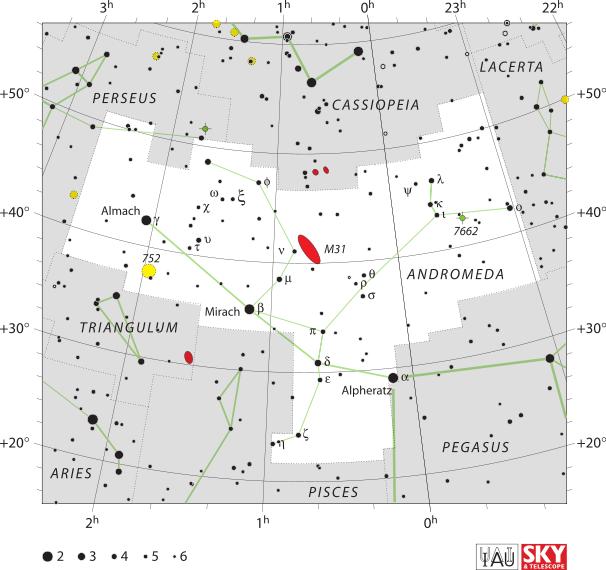
Andromeda (Andromeda)
In Greek Mythology, Andromeda was a princess who Perseus chained a rock around and was sent to be eaten by the sea creature, Cetus.
Click here to read more
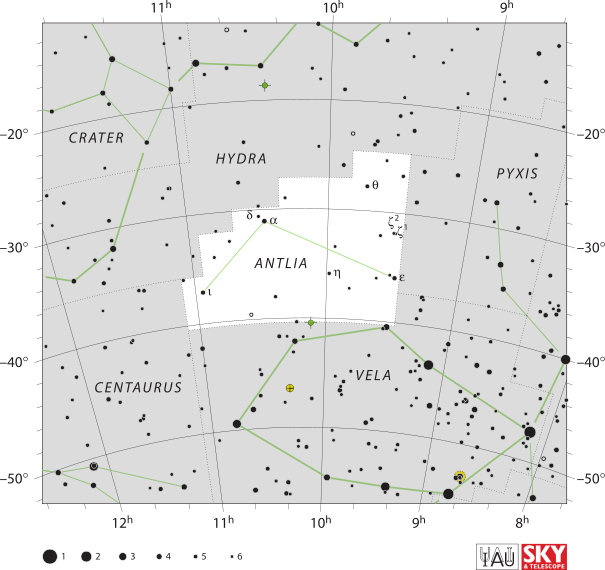
Antlia (Air Pump)
Antlia means "pump" and it specifically represents an air pump.
Click here to read more
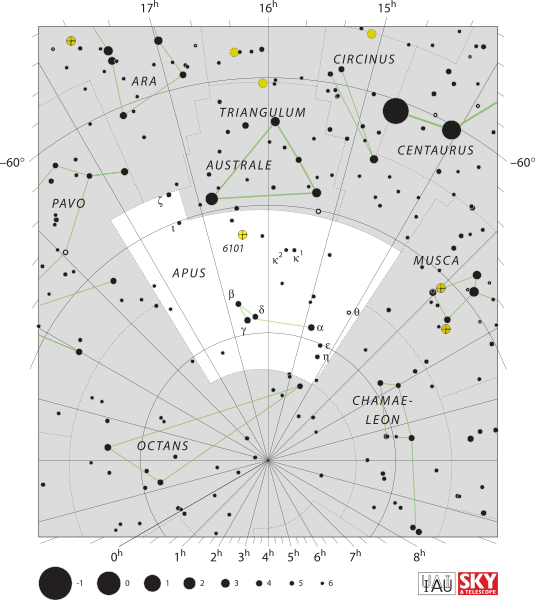
Apus (Bird of Paradise)
Its name means 'no feet' in Greek because they believed that the birds of paradise had no feet.
Click here to read more

Aquarius (Waterbearer)
It is situated in a region called the Sea, named because of all the water related names of the constellations. It is one of the 12 zodiac signs. The Sun passes through it from mid-February to mid-March.
Click here to read more
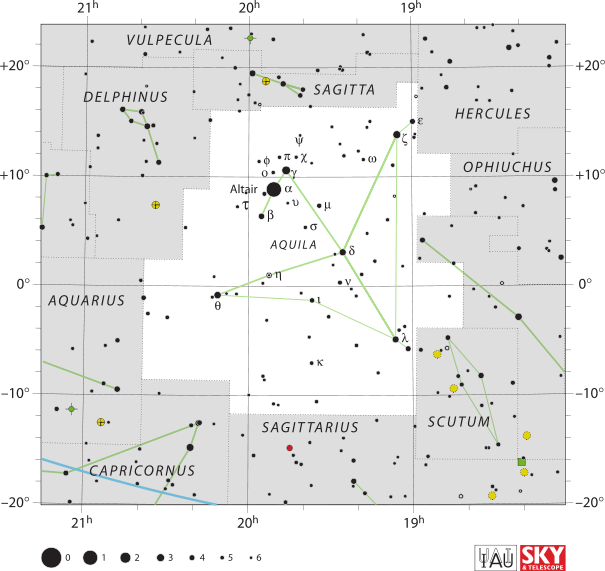
Aquila (Eagle)
In Greek Mythology, Aquila was owned by the God, Jupiter, and did many tasks for him. Usually represented as an Eagle.
Click here to read more
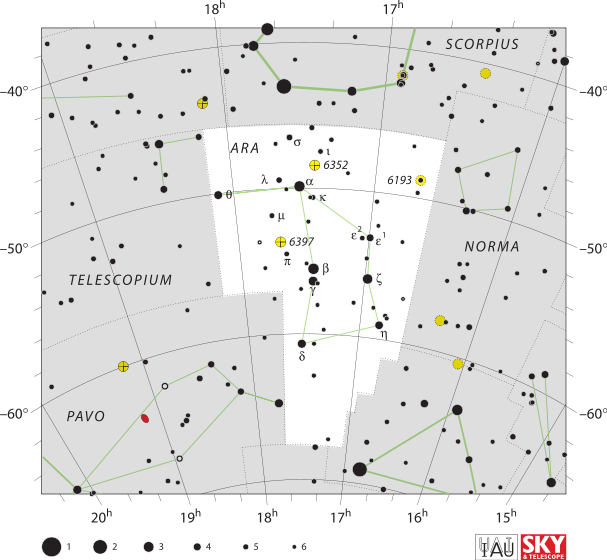
Ara (Alter)
In Greek Methology, Ara was the Alter made by Cyclops on which the Gods made offering and formed alliances when they were about to go to battle with the Titans.
Click here to read more

Aries (Ram)
In Greek Mythology, astronomers visulized Aries as a ram lying down with its head turned to the right.
Click here to read more
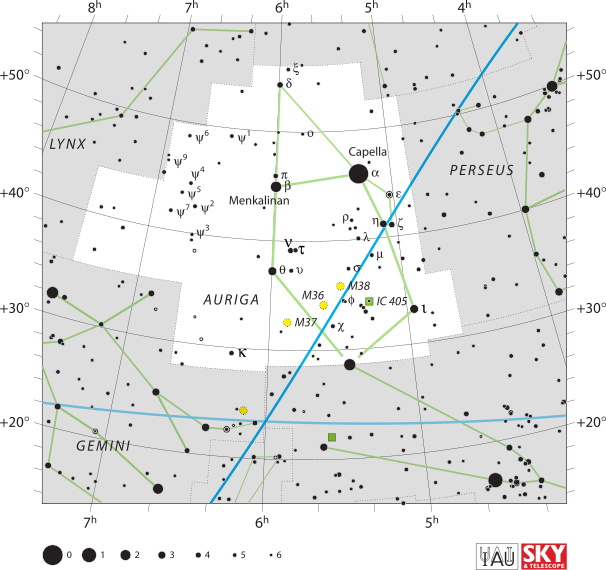
Auriga (Charioteer)
Its name is Latin for 'charioteer' and its stars form a shape that has been associated with the pointed helmet of a charioteer.
Click here to read more
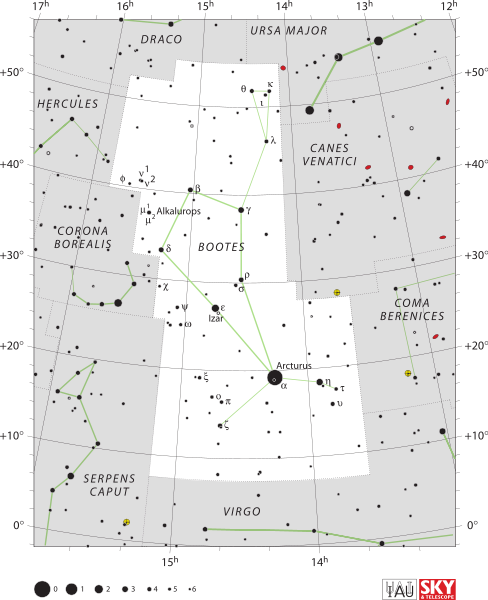
Boötes (Herdsman)
In ancient Babylon, Boötes is known as the god Enlil who is a special patron of farmers. Boötes was also supposed to have invented the plough.
Click here to read more
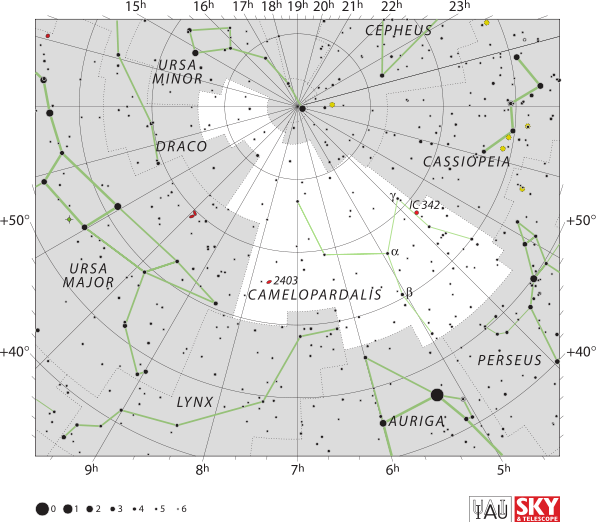
Camelopardalis (Giraffe)
H. A. Rey has suggested an alternative way to connect the stars of Camelopardalis into a giraffe figure.
Click here to read more

Cancer (Crab)
In Greek Mythology, Cancer 'the crab' was sent by the Goddess of Hera playing a minor role in the 'Twelve Labors of Hercules.' It is said that Cancer pinched Hercules' toe but was crushed by Hercules' foot. Hera gave Cancer a place in the sky for his efforts but none of its stars were bright due to Cancer being killed.
Click here to read more
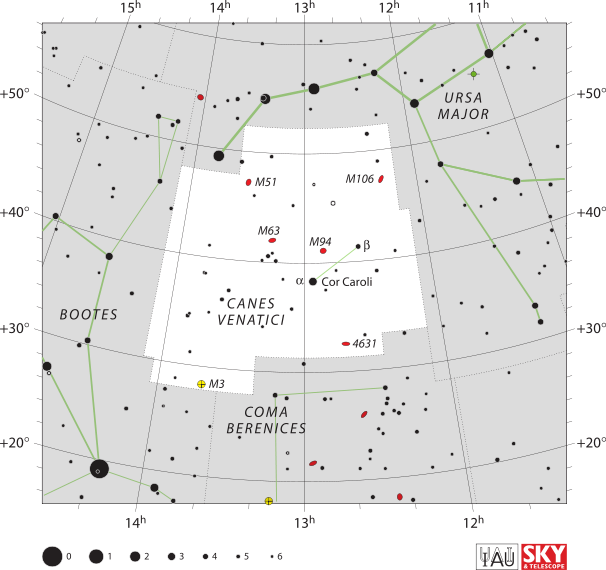
Canes Venatici (Hunting Dogs)
In the medieval times, the identification of these stars with the dogs of Boötes arose through a mistranslation. Some of Boötes' stars were traditionally described as representing the club of Boötes. In 1533, the German astronomer Peter Apian depicted Boötes as having two dogs with him.
Click here to read more
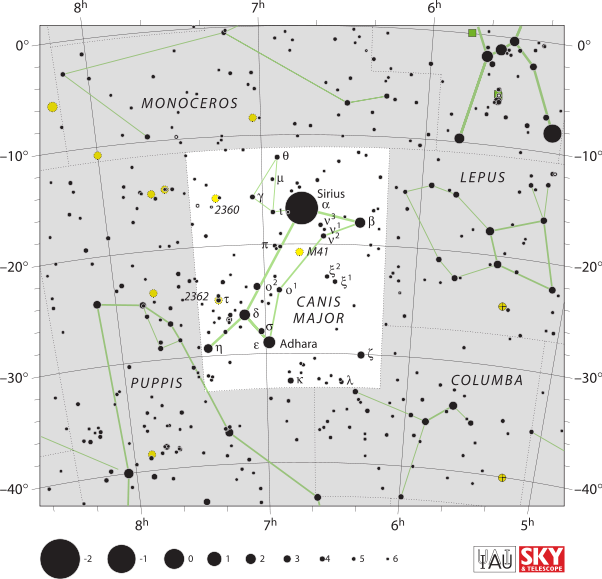
Canis Major (Great Dog)
Canis Major is considered to represent Orion's hunting dog, pursuing Lepus the Hare or helping Orion fight Taurus the Bull; and is referred to in this way by Aratos, Homer and Hesiod.
Click here to read more
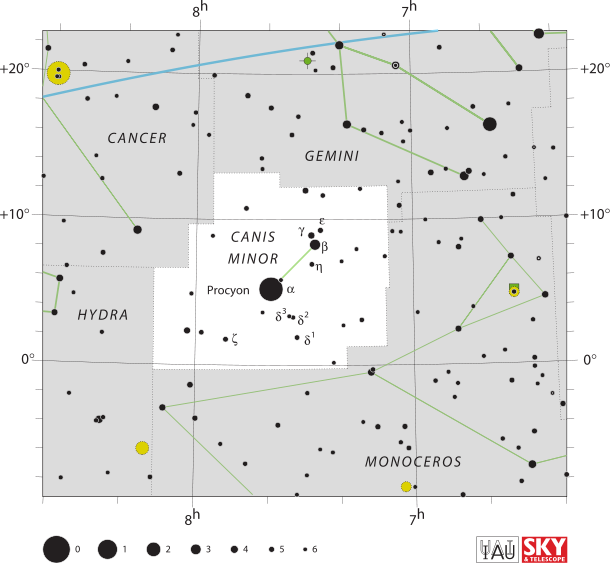
Canis Minor (Little Dog)
Canis Minor is Latin for 'smaller dog' in contrast to Canis Major, the larger dog, and it is commonly represented as one of the dogs following the constellation of Orion the hunter.
Click here to read more
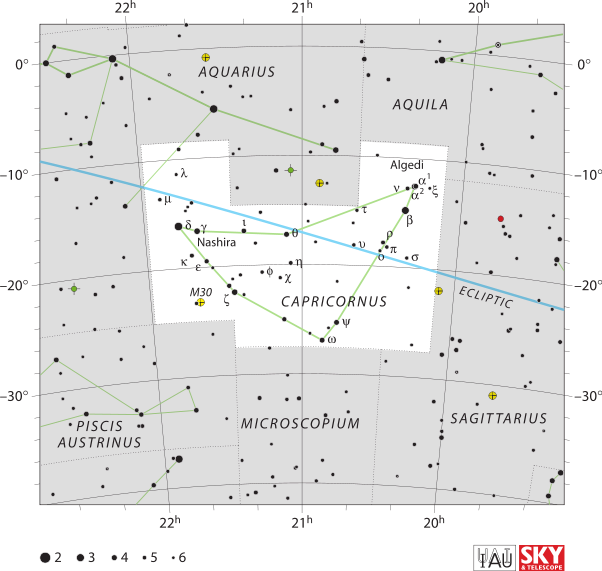
Capricornus (Capricorn)
Capricorn's name is Latin for 'horned male goat' or 'goat horn', and it is commonly represented in the form of a sea-goat: a mythical creature that is half goat, half shark.
Click here to read more
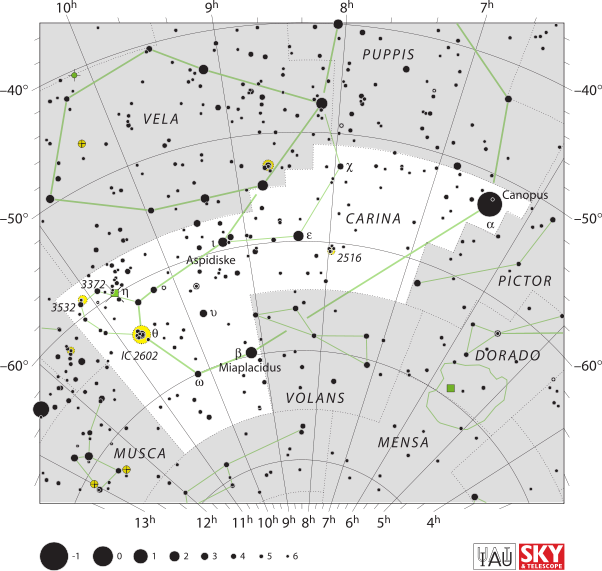
Carina (Keel)
Carina's name is Latin for the keel of a ship, and it was formerly part of the larger constellation Argo Navis (the ship Argo) until that constellation was divided in three.
Click here to read more
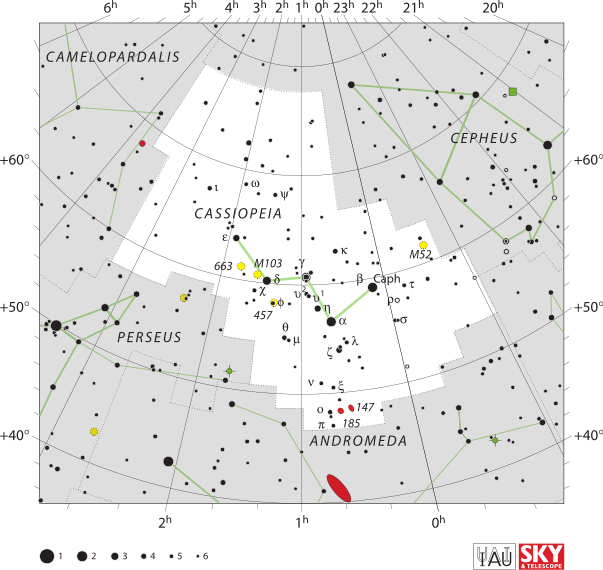
Cassiopeia (Cassiopeia)
In Greek mythology Cassiopeia was considered to represent the vain 'Queen Cassiopeia', who boasted about her unrivalled beauty.
Click here to read more
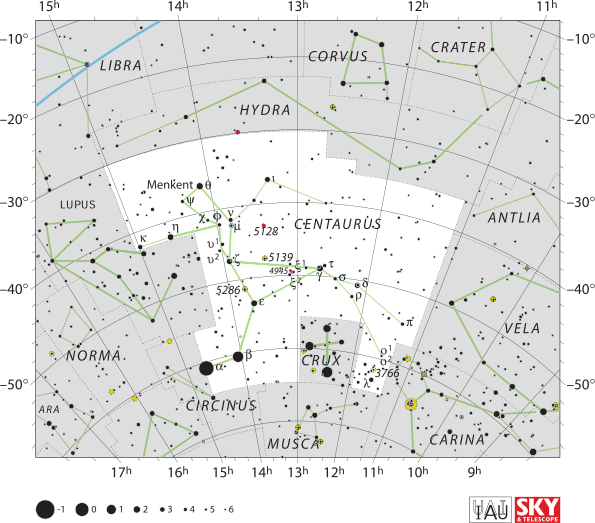
Centaurus (Centaur)
Centaurus has traditionally been identified as a centaur, a mythological creature, half man, half horse. Centaurus, the Centaur, is one of the largest constellations in the sky. It represents Chiron, one of the half-man, half-horse beasts of Greek mythology. Chiron was accidentally wounded by Hercules. After his death, Hercules honored him by giving him a place in the stars.
Click here to read more
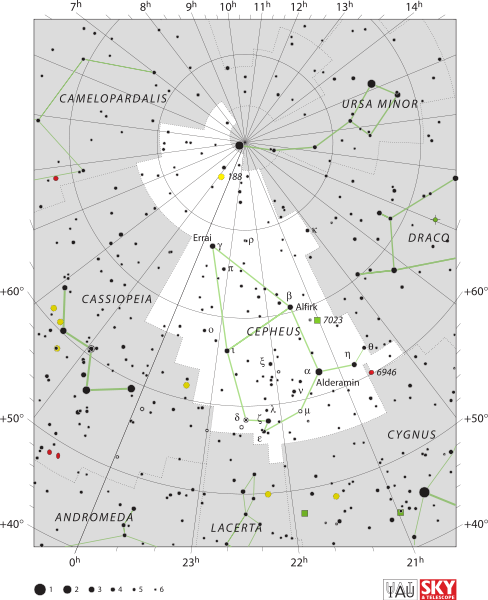
Cepheus (Cepheus)
Cepheus is named after the King of Aethiopia in Greek mythology, and is considered to represent a king.
Click here to read more
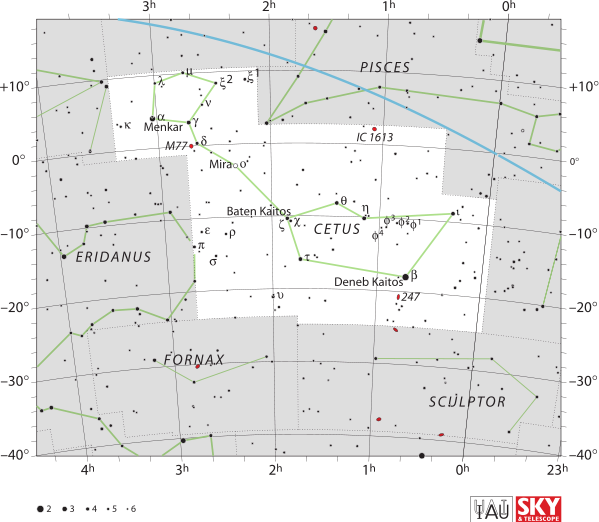
Cetus (Whale)
In Greek mythology, the name Cetus refers to a sea monster, although it is often called 'the whale' today. Cetus is located in the region of the sky known as the Water, along with other watery constellations such as Aquarius, Pisces, and Eridanus.
Click here to read more
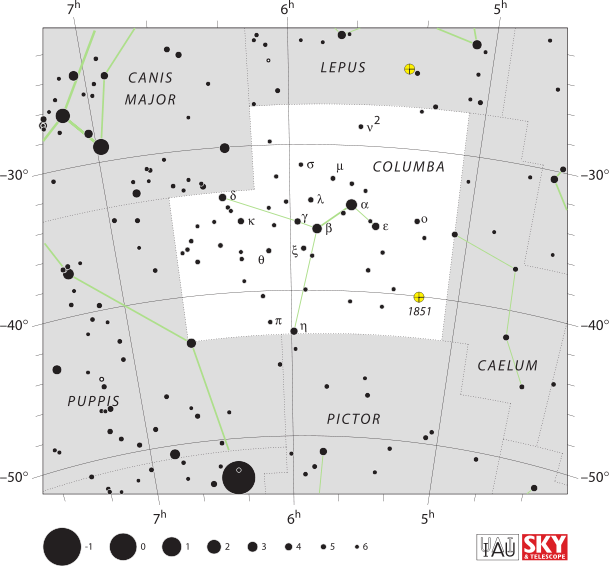
Columba (Dove)
Plancius originally named the constellation Columba Noachi ('Noah's Dove'), referring to the dove that gave Noah the information that the Great Flood was receding.
Click here to read more
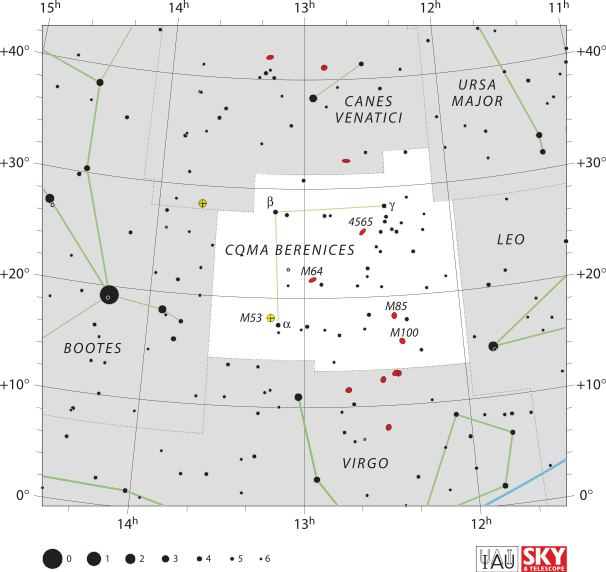
Coma Berenices (Berenices Hair)
Coma Berenices means "Berenice's Hair" (in Greek, via Latin), and refers to the legend of Queen Berenice II of Egypt, who sacrificed her long hair to the Goddess Aphrodite so her husband would return safely from a dangerous expedition.
Click here to read more
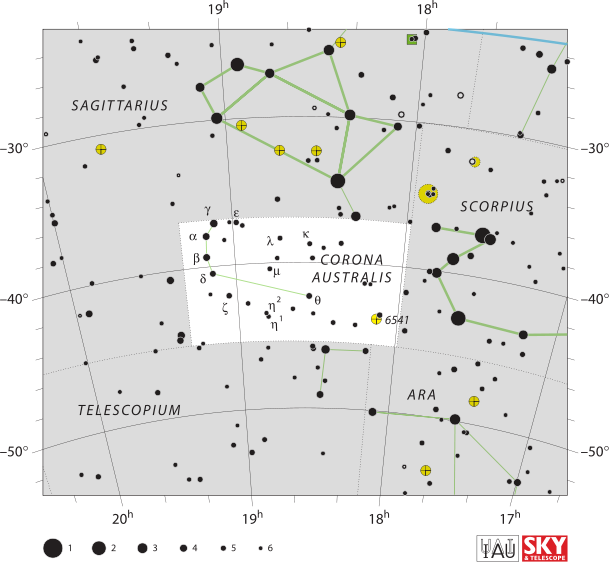
Corona Australis (Southern Crown)
Corona Australis means "southern crown", and it contrasts with Corona Borealis, the northern crown.
Click here to read more
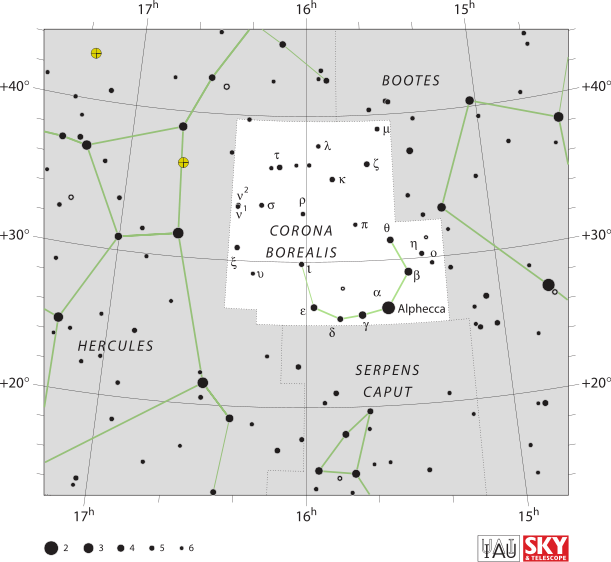
Corona Borealis (Northern Crown)
Corona Borealis is Latin for 'northern crown', a name inspired by its shape; its main stars form a semicircular arc.
Click here to read more
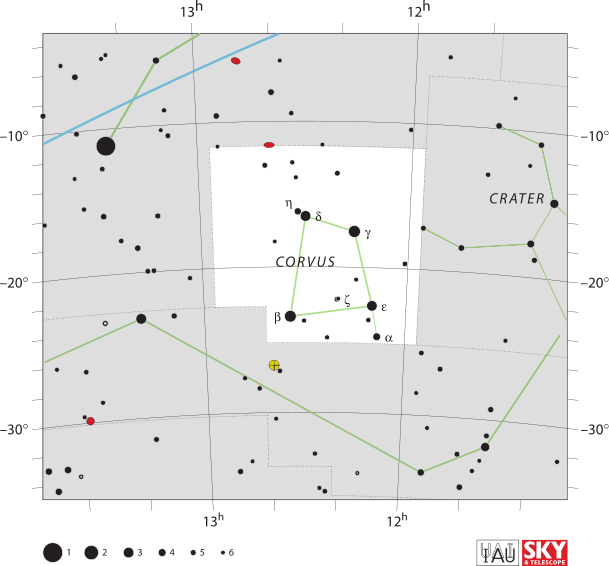
Corvus (Crow)
In Greek Mythology, Corvus was Apollo's sacred bird with snowy white feathers. Asigned to watch over his pregnant love Coronis reported how she was unfaithful. In Apollo's anger, he turned the crows feathers black and took away his voice.
Click here to read more
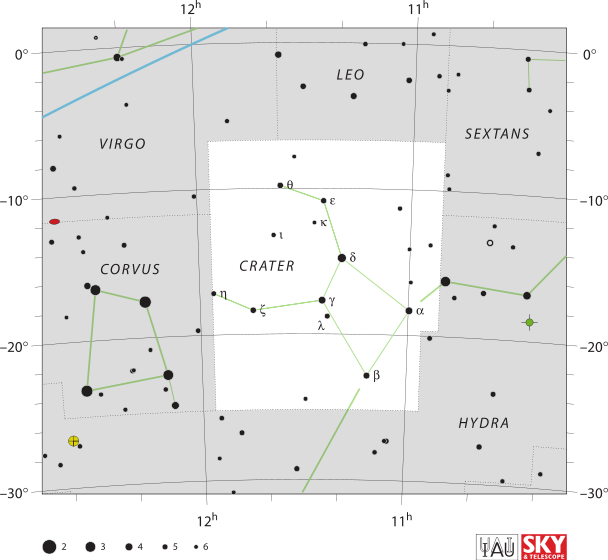
Crater (Cup)
In Greek Mythology, Apollo tosses angrily a crow, a snake and this constealltion, a cup into the sky. This is because a crow was sent to fetch water in the cup but lazily the crow fetches water and takes back a water snake as an excuse.
Click here to read more

Crux (Cross)
As a highly distinctive asterism, Crux has great significance in the cultures of the southern hemisphere. Crux was visible to the Ancient Greeks, who regarded it as part of the constellation Centaurus.
Click here to read more
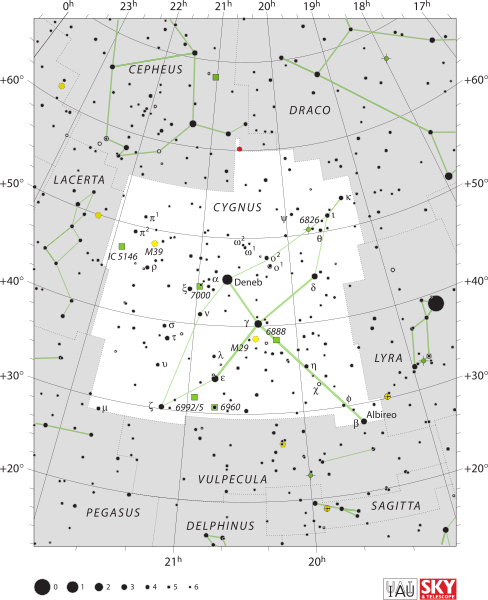
Cygnus (Swan)
In Greek Mythology, two close friends competed against eachother in a race across the sky, flying to close to the sun, burnt their chariots and fell to earth. When waking, one was at the bottom of a river and the friend could not dive deep enough to fetch his body for a proper burial. Zeus said that if he gave him a body of a swan he could, but would remain a swan and loose his immortality. For the unselfish agreement Zeus placed the image of the swan into the night sky.
Click here to read more
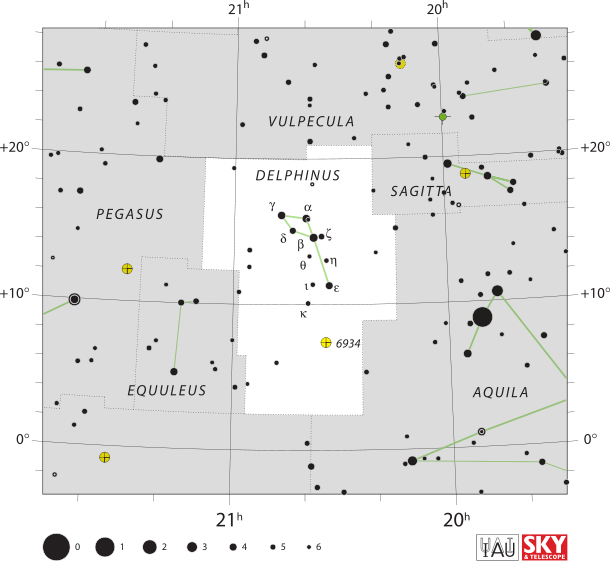
Delphinus (Dolphin)
In Greek Mythology, the Greek god Poseidon wanted to marry Amphitrite. She fled to the Alas mountains wanting to protect her virginity. Delphinus accidently found her and persuaded her to accept Poseidon's proposal. Out of gratitude the god placed the image of the dolphin into the night sky.
Click here to read more
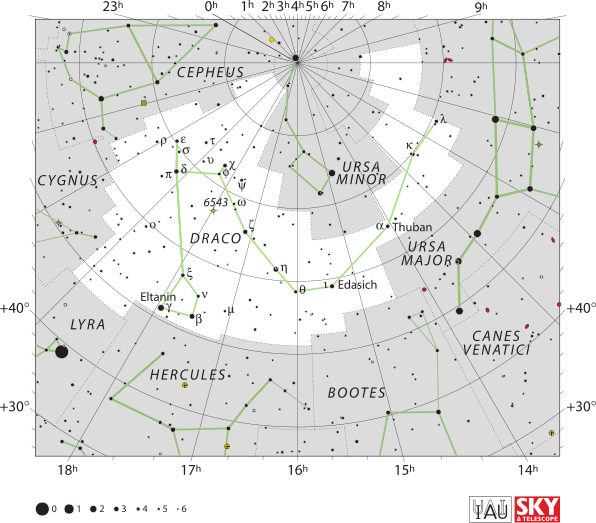
Draco (Dragon)
The ancient Egyptians identified Draco as 'Tawaret' the goddess of the northern sky. As the constellation never set she was shown to be a fierce protective goddess whose body consisted of crocodile, human, lioness, and hippopotamus parts.
Click here to read more
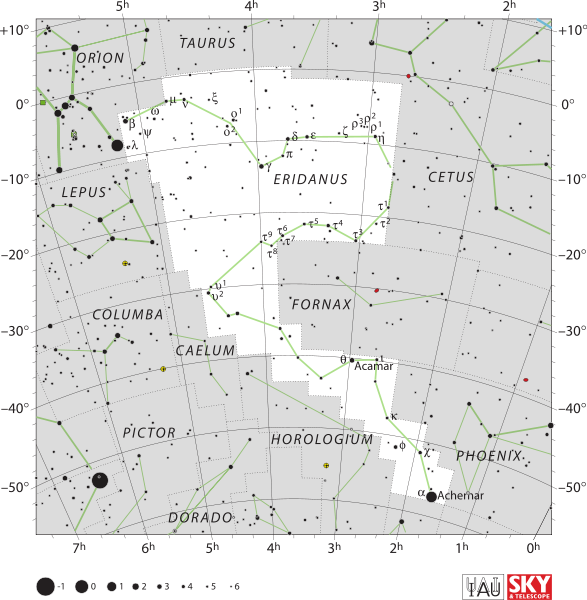
Eridanus (Eridanus)
In Greek Mythology, Eridanus was supposed to be the constellation that Phaeton drove along in the myth.
Click here to read more
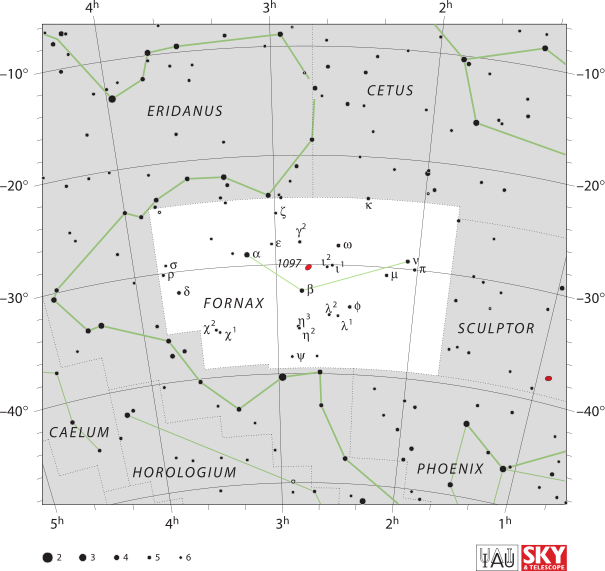
Fornax (Furnace)
Fornax was originally called 'Fornax Chemica' representing a small solid fuel heater used for heating chemical experiments.
Click here to read more

Gemini (Twins)
In Greek Mythology, Gemini may be the origin of the myth of the cattle of Geryon, which forms one of The Twelve Labours of Heracles.
Click here to read more
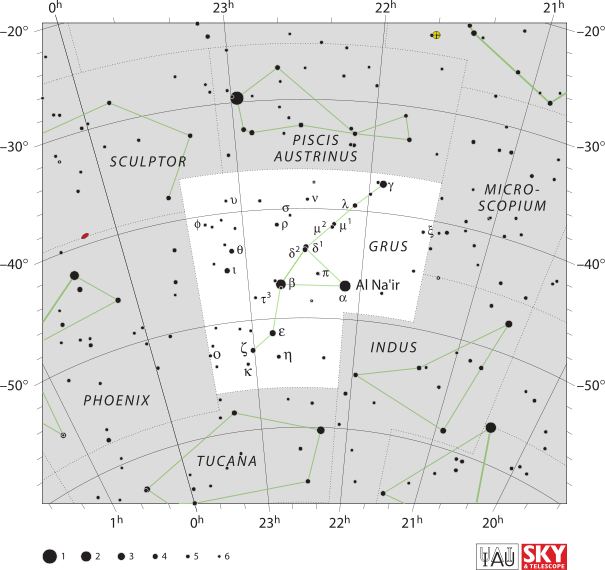
Grus (Crane)
The stars that form Grus were originally considered part of Piscis Austrinus.
Click here to read more
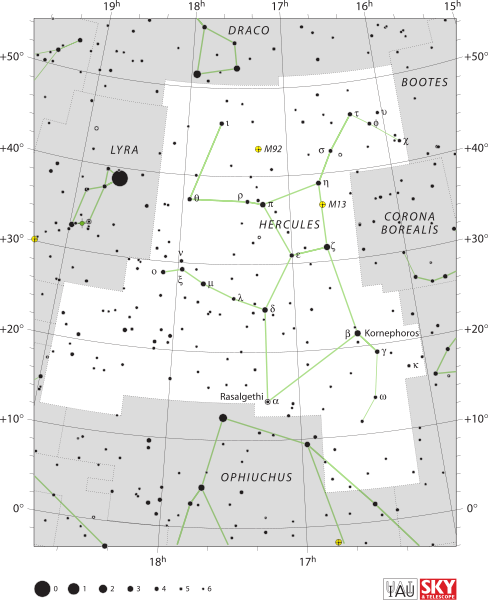
Hercules (Hercules)
In Greek Mythology, Hercules prayed for Zeus' help in winning a battle between two giants, Hercules won the battle and was shown in the night sky as kneeling from his prayer.
Click here to read more

Hydra (Sea Serpent)
The shape of Hydra shows a twisting snake, which relates to the story of Apollo and is the sanke the crow fetches with Apollo angrily casting them both into the sky.
Click here to read more
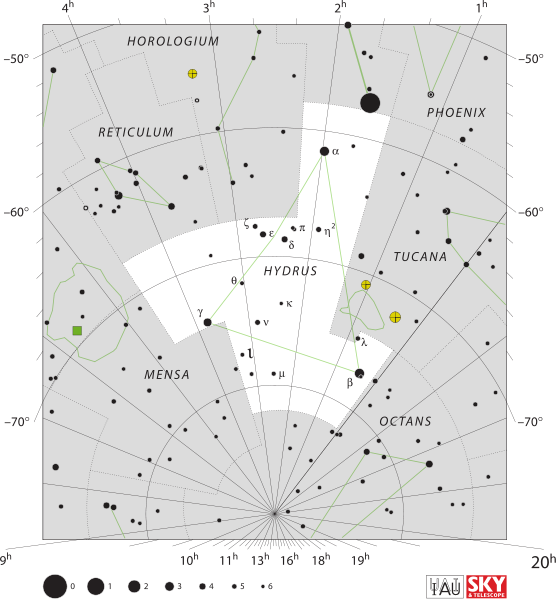
Hydrus (Hydrus)
Hydrus means 'male water snake', and it should not be confused with Hydra, a much larger constellation which represents a female water snake.
Click here to read more
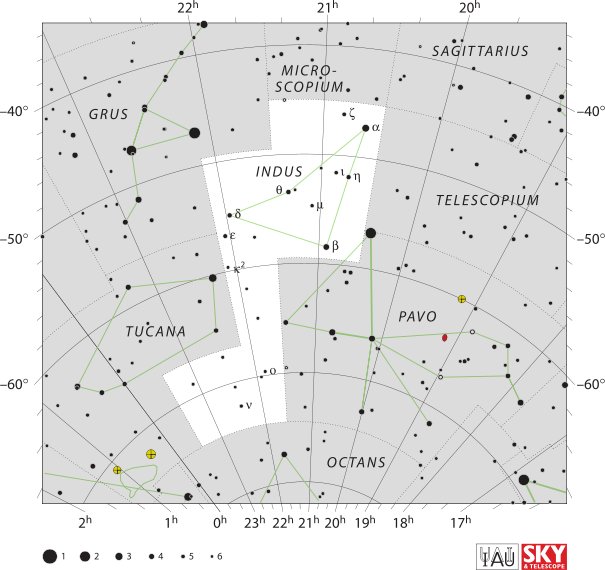
Indus (Indian)
Created in the sixteenth century, Indus represents an Indian, a word that could refer at the time to any native of Asia or America.
Click here to read more

Leo (Lion)
In Greek mythology, Leo was identified as the Nemean Lion which was killed by Hercules during one of his twelve labours, and subsequently put into the sky.
Click here to read more
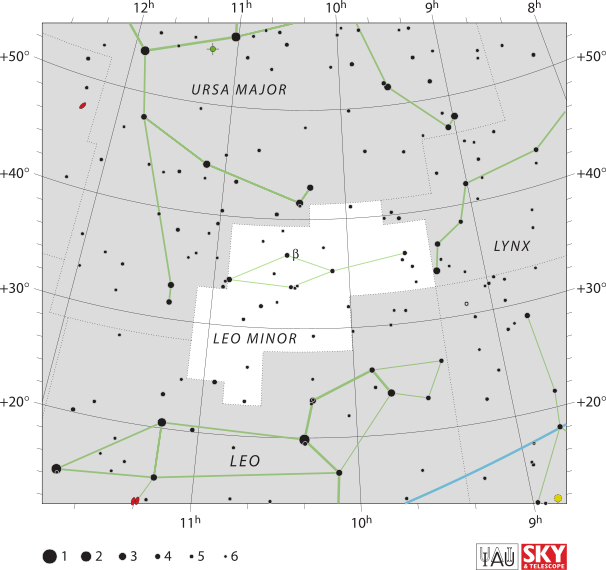
Leo Minor (Little Lion)
Its name means "the smaller lion", in contrast to Leo, the larger lion.
Click here to read more
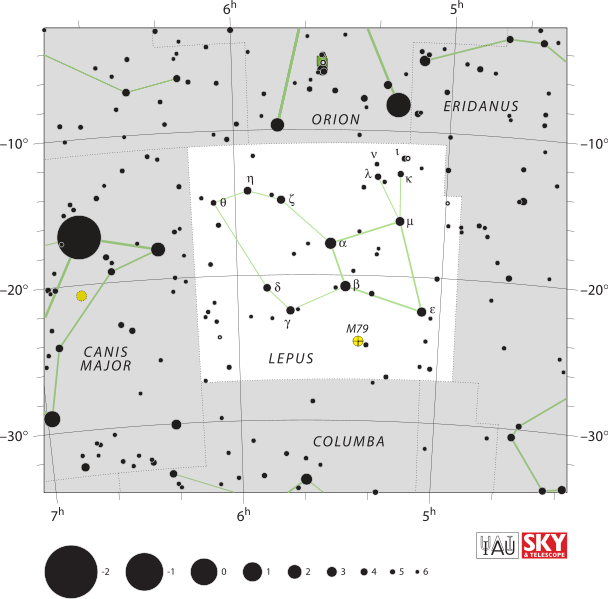
Lepus (Hare)
Lepus is located below the constellation Orion (the hunter), and is sometimes represented as a hare being chased by Orion or, alternatively, by Orion's hunting dogs.
Click here to read more

Libra (Balance)
Libra being the 'scales' were sacred to the sun god Shamash. The scales are associated with law, fairness and civility and the only symbol in the zodiac that's not a living creature.
Click here to read more
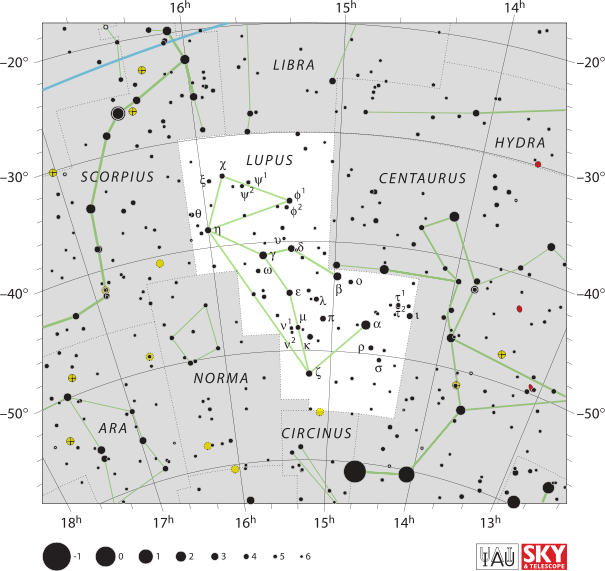
Lupus (Wolf)
In Greek Mythology, Lupus is often found in association with the sun god and another mythical being called the Bison-man, which is supposedly related to the Greek constellation of Centaurus.
Click here to read more
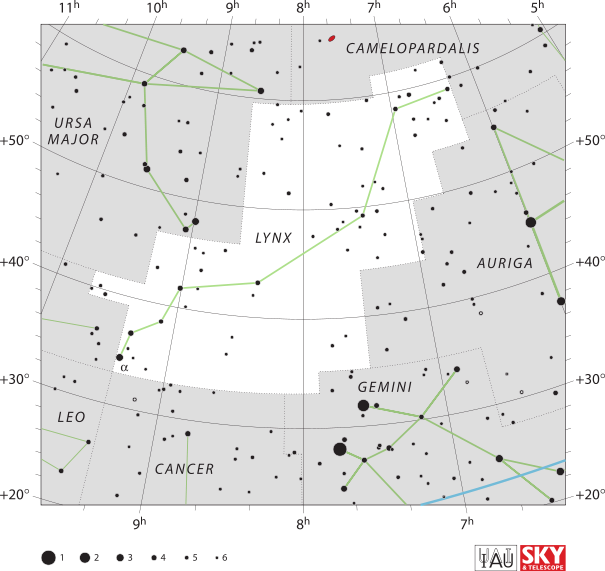
Lynx (Lynx)
Lynx is named after the lynx, a genus of cat. It is a very faint constellation; its brightest stars form a zigzag line.
Click here to read more
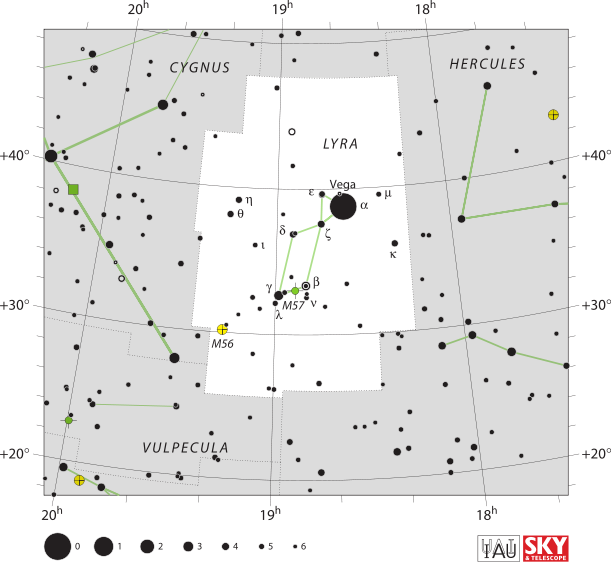
Lyra (Lyre)
In Greek Mythology, Lyra (a harp) is associated with the myth Orpheus. After his death, his Lyre was thrown into the river, Zeus sent an eagle to retrieve it and then ordered them both to be placed in the sky.
Click here to read more
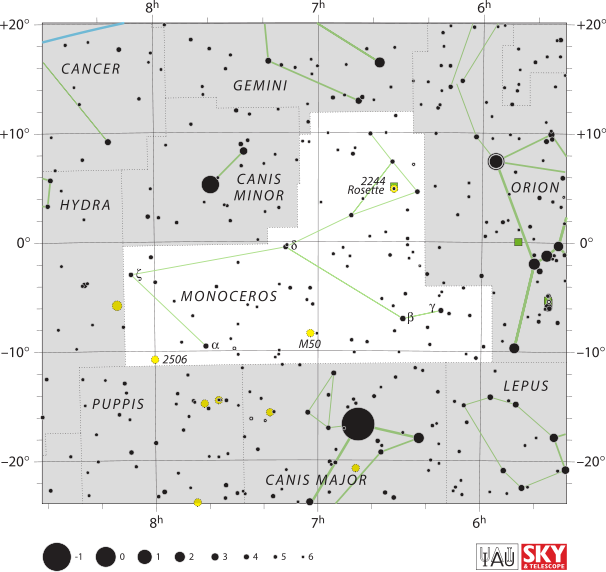
Monoceros (Unicorn)
Monoceros' name is Greek for unicorn. It has been mentioned as "the second horse between the Twins and the Crab has many stars, but not very bright.
Click here to read more

Musca (Fly)
Musca, under its original name Apis – the Bee, provides nourishment for the nearby constellation Chamaeleon trying to catch the insect with its tongue.
Click here to read more
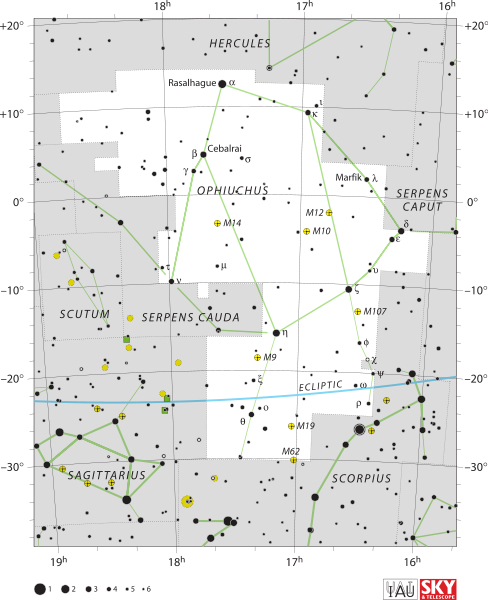
Ophiuchus (Ophiuchus)
In Roman era Mythology, Ophiuchus represents Asclepius, who learned how to keep death at bay from a serpent bringing another herbs. To prevent the human race from becoming immortal, zeus killed him but placed him in the heavens to honour him.
Click here to read more

Orion (Orion)
Orion's name derives from Greek Mythology, in which Orion was a gigantic hunter of primordial times. One story suggests that Orion was killed by a giant scorpion and the gods raised them both into the skies.
Click here to read more

Pavo (Peacock)
Pavo's name is Latin for peacock.
Click here to read more
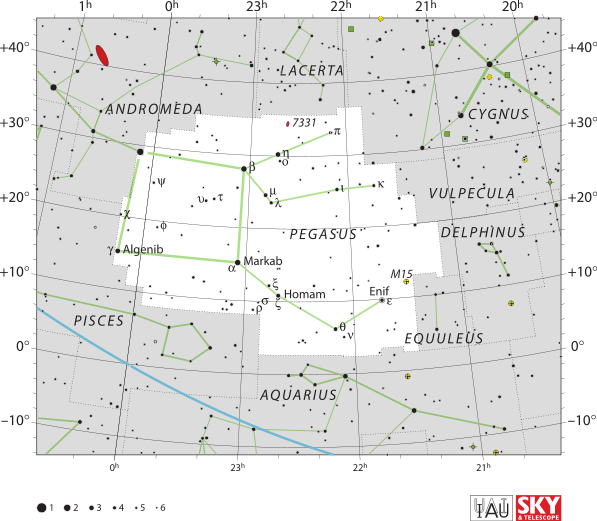
Pegasus (Flying Horse)
Pegasus the constellation is named after the winged horse Pegasus in Greek mythology.
Click here to read more
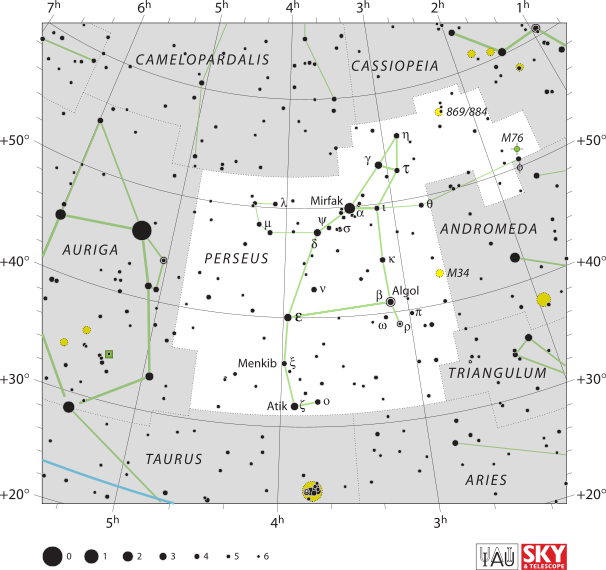
Perseus (Perseus)
In Greek Mythology, Perseus the constellation is named after the Greek hero Perseus.
Click here to read more

Phoenix (Phoenix)
Phoenix is named after the mythical bird.
Click here to read more
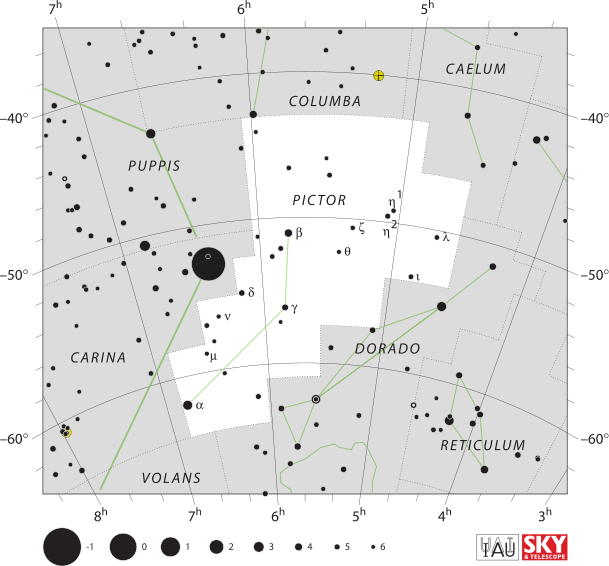
Pictor (Painter)
Pictors name is Latin for painter, but it is in fact an abbreviation of its original name Equuleus Pictoris, the 'painter's easel', and it is normally represented as an easel.
Click here to read more

Pisces (Fishes)
In Greek Mythology, Pisces represents the fish into which Aphrodite and her son Eros transformed into in order to escape the fire god Typhon; they are tied together to make sure they do not lose each other.
Click here to read more
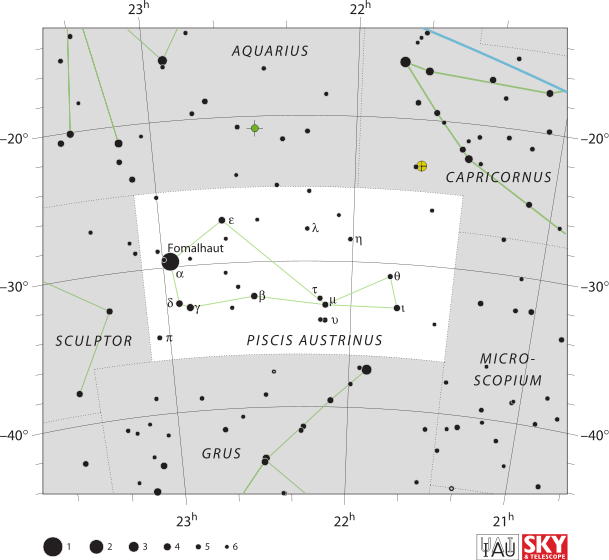
Piscis Austrinus (Southern Fish)
In Greek mythology, this constellation is known as the Great Fish and it is portrayed as swallowing the water being poured out by Aquarius, the water-bearer constellation.
Click here to read more
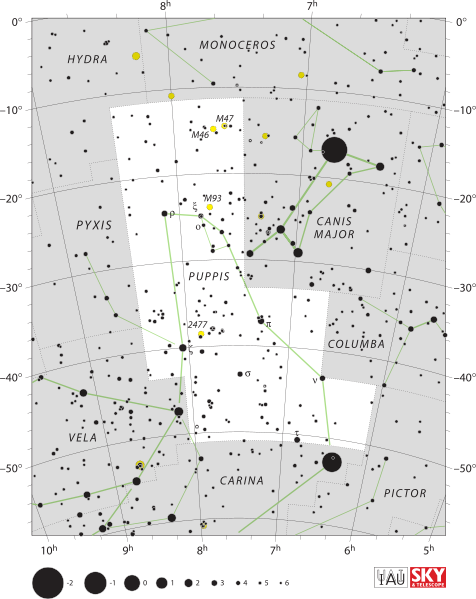
Puppis (Stern)
Puppis' name is the Latin word for the poop deck of a ship, and Puppis represents the deck of the ship and its deck houses.
Click here to read more

Pyxis (Compass)
Pyxis' name is Latin for a mariner's compass.
Click here to read more
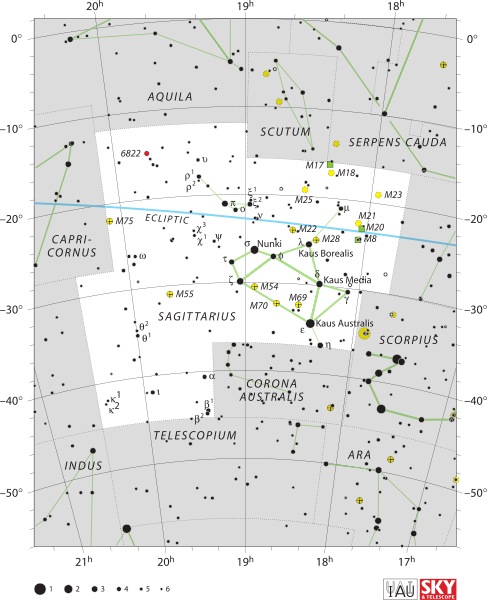
Sagittarius (Archer)
In Greek mythology, Sagittarius is identified as a centaur: half human, half horse. In some legends, the Centaur Chiron was the son of Philyra and Saturn, who was said to have changed himself into a horse to escape his jealous wife, Rhea.
Click here to read more
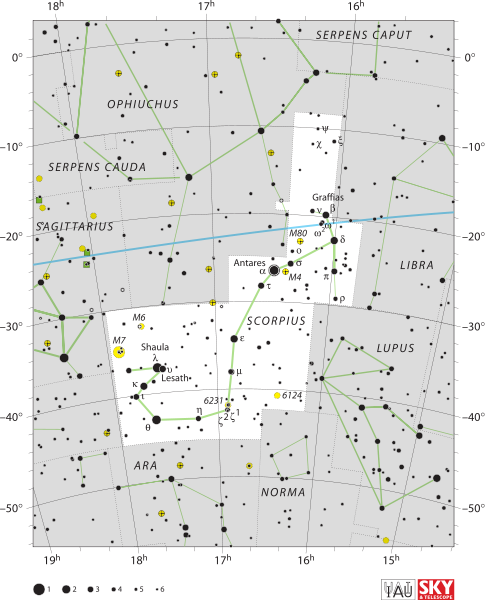
Scorpius (Scorpion)
In Greek Mythology, Scorpius (the scorpion) was sent into the sky as the battle between Scorpius and Orion caught the attention of Zeus. Orion boasted he could kill every animal on earth to goddess Artemis who offered protection to all the creaturs and sent a scorpion who killed Orion.
Click here to read more
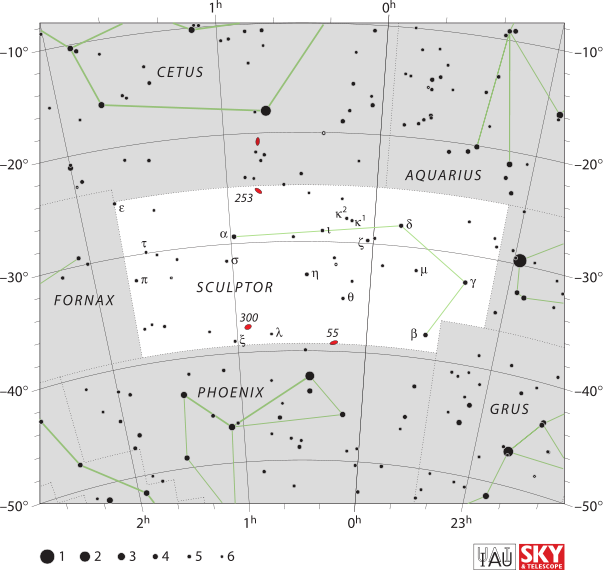
Sculptor (Sculptor)
Sculptor was introduced by Nicolas Louis de Lacaille in the 18th century. He originally named it Apparatus Sculptoris (the sculptor's studio), but the name was later shortened.
Click here to read more

Serpens (Serpent)
It is unique among the modern constellations in being split into two non-contiguous parts, Serpens Caput (Serpent's Head) to the west and Serpens Cauda (Serpent's Tail) to the east. Between these two halves lies the constellation of Ophiuchus, the 'Serpent-Bearer'.
Click here to read more
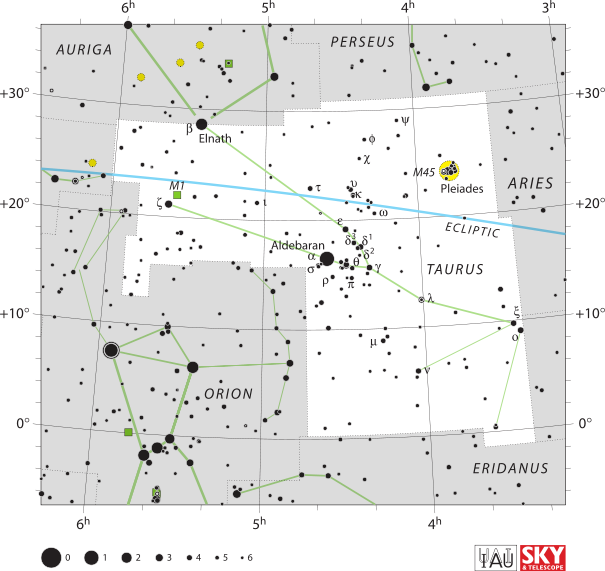
Taurus (Bull)
In Greek mythology, Taurus was identified with Zeus, who assumed the form of a magnificent white bull to abduct Europa, a legendary Phoenician princess. In illustrations, only the front portion of this constellation are depicted; in Greek mythology this was sometimes explained as Taurus being partly submerged as he carried Europa out to sea.
Click here to read more
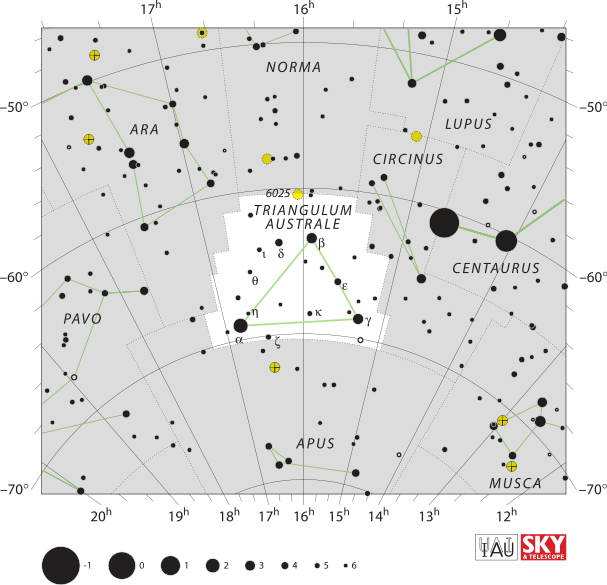
Triangulum Australe (Southern Triangle)
Triangulum Australe's name is Latin for 'the southern triangle', which distinguishes it from Triangulum in the northern sky.
Click here to read more
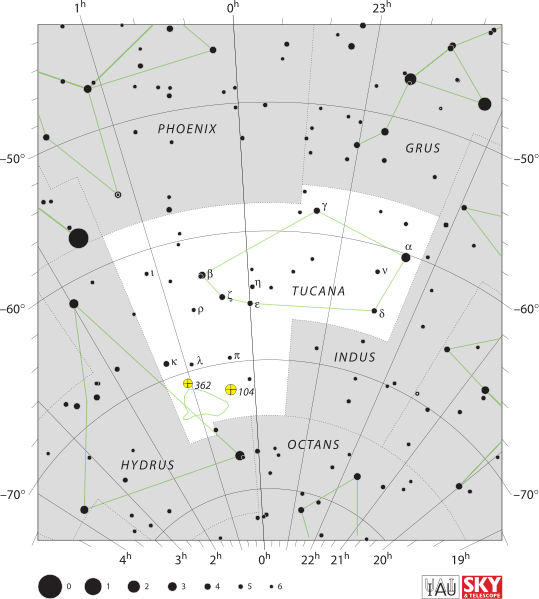
Tucana (Toucan)
Tucana's name is Latin for the toucan, a South American bird.
Click here to read more
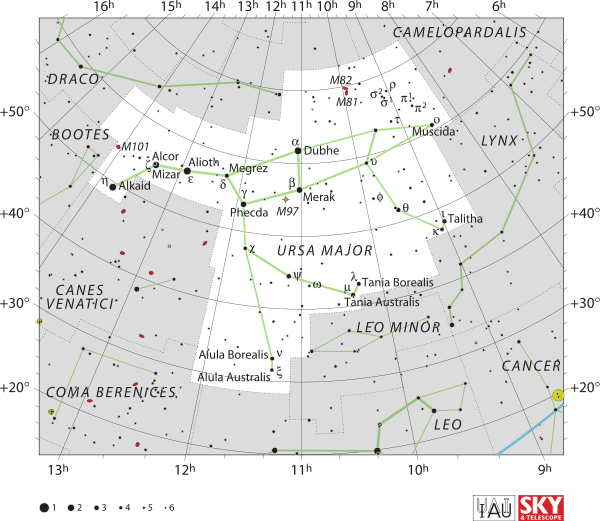
Ursa Major (Great Bear (Dipper))
In Greek mythology, Zeus (the king of the gods) lusts after a young woman named Callisto, a nymph of Artemis. Hera, Zeus' jealous wife, transforms the beautiful Callisto into a bear. Callisto, while in bear form, later encounters her son Arcas. Arcas almost shoots the bear, but to avert the tragedy, Zeus hurls them both into the sky, forming Ursa Major.
Click here to read more
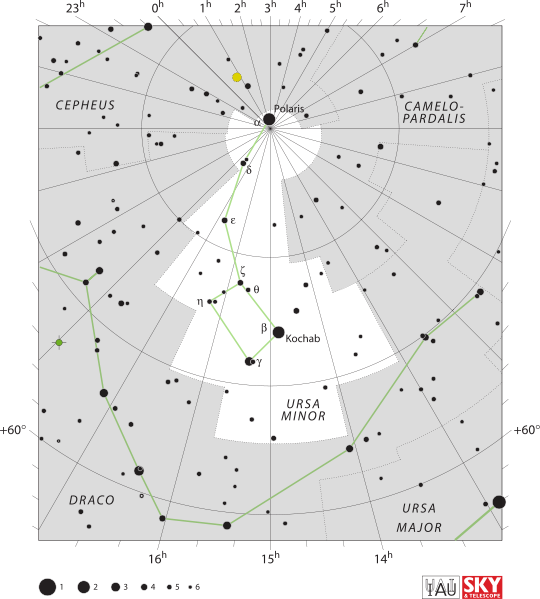
Ursa Minor (Little Bear (Dipper))
Ursa Minor is commonly visualized as a baby bear with an unusually long tail. The tail was said to have been lengthened from that usually expected for a bear, because of its being held by the tail and spun around the pole. (The center of the sky).
Click here to read more
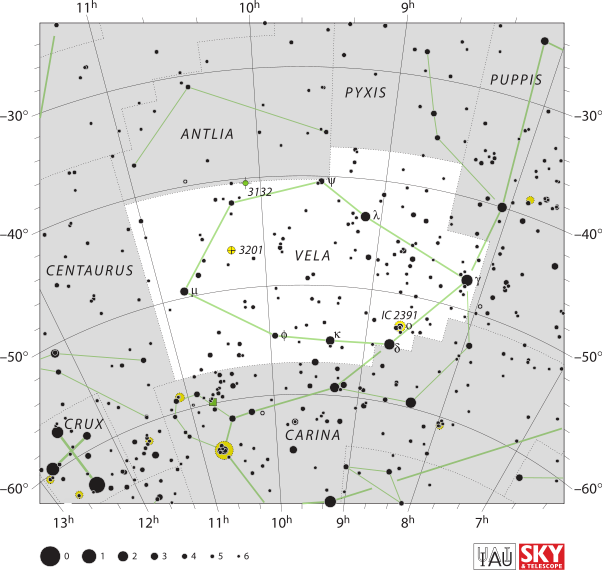
Vela (Sails)
Its name is Latin for the sails of a ship, and it was originally part of a larger constellation, the ship Argo Navis, which was later divided into three parts, the others being Carina and Puppis.
Click here to read more

Virgo (Virgin)
The Greeks and Romans associated Virgo with their goddess of wheat, Demeter-Ceres who is the mother of Proserpina-Persephone. Alternatively, she was sometimes identified as the virgin goddess Iustitia or Astraea, holding the scales of justice in her hand as the constellation Libra.
Click here to read more

Volans (Flying Fish)
It represents a flying fish; its name is a shortened form of its original name, Piscis Volans.
Click here to read more

